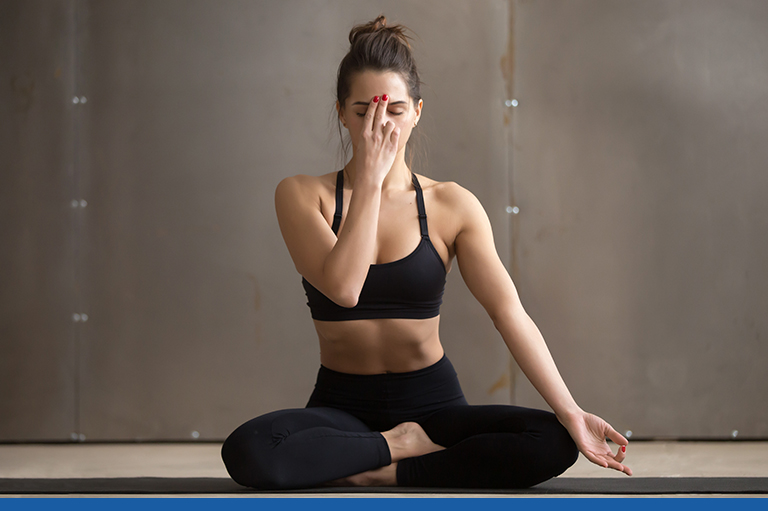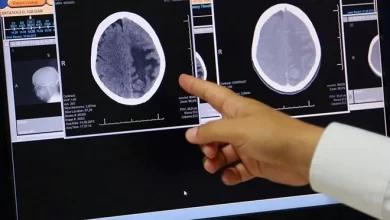Breathing Exercises

You’ve probably heard people say “Take a deep breath” many times when you’re stressed. This advice is not just a cliché. Deep breathing helps people better manage their feelings of stress and anxiety. And a lot of scientific evidence supports this.
Breathing provides oxygen to the body, which is necessary for energy production, and exhaling releases carbon dioxide, which is produced as a result of energy production. Research has also shown that breathing has other powerful effects on the body and mind. Deep breathing techniques that work the diaphragm, the large muscle that controls breathing, can reduce anxiety and stress, slow the heart rate, stabilize blood pressure, and strengthen the heart. This practice is also effective for strengthening the lungs and increasing their capacity. It is especially recommended for people with chronic diseases such as asthma and COPD (chronic obstructive pulmonary disease).
What is deep breathing?
Are you sure you are breathing correctly? Many people breathe at short intervals. In other words, they only let air in from the upper part of the chest. This may be due to poor posture, stress, or an underlying lung disease that makes breathing difficult.
But the mechanism that regulates breathing is actually in your belly. When the diaphragm contracts, it pulls in your lungs and expands your abdomen to fill your lungs with air. True deep breathing starts from your nose and descends to your stomach. This method maximizes the amount of air you take into your body, and therefore oxygen.
Deep breathing exercises help engage and strengthen your diaphragm so that each breath brings more oxygen to you. These exercises also have great effects on the stress level.

How to breathe properly?
This uninterrupted movement, which provides oxygenation of all the organs of our body, takes place unconsciously, without any effort. As you breathe in, the rib cage expands and the tip of the diaphragm lowers, allowing the lungs to be filled with maximum fresh air. In exhalation, the situation is reversed, the diaphragm rises and the ribs stretch to expel the carbon dioxide-laden air. This is carried out by the autonomic nervous system, which from birth also regulates other vital functions such as the beating of the heart or the regulation of body temperature. However, it is possible to control your breathing, actions such as holding your breath for a few seconds to a few minutes, increasing your breathing rate, breathing through your mouth, exhaling through your nose are in your hands.
Correct breathing, which helps to create an environment suitable for the balance of the body, should occur peacefully and smoothly. It should be plentiful and flowing, and it should activate the entire belly, just like babies do on their own. However, breathing is accelerated by the troubles, stress and fatigue of modern life and often cannot be done correctly. The breath becomes shorter and more superficial. The diaphragm cannot fully contract and inhale only by inflating the thorax, not the abdomen. As a result, the respiratory capacity is reduced by 2 to 3 times, the body gets tired and various body aches occur.
Since the diaphragm does not fulfill its role, the digestive organs become compressed and lose their freedom of movement, which can cause many dysfunctions. Constipation, stomach problems, kidney ailments, even vascular diseases are also likely to occur.
Therefore, it is vital to learn how to breathe at the right pace for better physical and mental health. Ideally, it is best to start with conscious breathing exercises. With proper breathing, the body heals, relaxes, repairs itself and rests.

4 deep breathing exercises for relaxation
Do you want to reduce stress and tension, concentrate better or fall asleep earlier? These exercises can help you. Repeat them daily to get the most out of their relaxing effects.
1. Abdominal breath
This is one of the simplest breathing exercises. It is often used to help people with chronic lung conditions strengthen their diaphragm to make breathing easier. This exercise also has a relaxing effect on the body, helping to lower your heart rate.
– Lie on your back, bend your knees, support your head.
– Put one hand on your chest and the other slightly below your ribs.
– Inhale slowly through your nose and feel your stomach push your hand upwards.
– Exhale from the middle of your mouth, tuck your stomach muscles inward with your lips pursed.
– Repeat this cycle several times.
2. 4-7-8 technique
This proven deep breathing exercise can lower levels of the stress hormone cortisol, stabilize heart rate, and relieve symptoms of stress and anxiety. This breathing exercise can also help you fall asleep.
– Sit or lie down in a comfortable position. The tip of your tongue should touch the back of your teeth on your palate.
– Take deep breaths counting to four.
– Hold your breath for a count of seven, then exhale for a count of eight.
– Repeat this cycle several times.
3. Alternative breathing technique
This slow breathing technique has been the foundation of yoga for centuries. The principle of this breathing exercise is to calm your mind and body by breathing through one nostril at a time. Studies show that this practice lowers heart rate, stabilizes blood pressure levels and relieves stress.
– Sit comfortably cross-legged on the floor (or on a cushion or towel), with your back as straight as possible.
– Put the back of your left hand on your lower thigh and your right hand in front of your face. Place your index and middle fingers between your eyebrows and close your right nostril with your thumb.
– Take a deep breath in through the left nostril.
– Close your left nostril with your ring finger and stop breathing. Hold your breath for a few seconds.
– Keep the left nostril closed and open the right nostril. Exhale slowly through the right nostril.
– Do the same, pausing for a full loop.
4. Square breathing technique
This breathing exercise is divided into four stages of equal duration and helps to reduce stress and calm anxiety.
– Sit in a comfortable position with your back straight. Exhale slowly until all the air is out of your lungs.
– Inhale slowly through your nose, counting to four.
– Hold your breath for a count of four.
– Exhale for a count of four again.
– Pause for the count of four after the last breath.
– Repeat this cycle several times.






